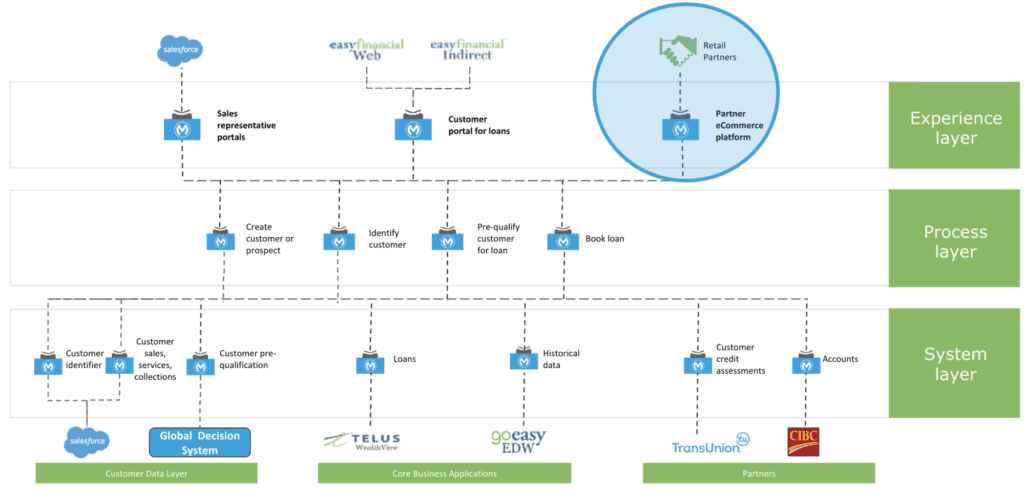Maturity leads to more systems and complex business processes, so how can a company maintain the agility necessary to meet customer expectations? The answer lies in taking a strategic approach to business automation, a new frontier in digital transformation.
While traditionally viewed as the reliance on technology to reduce costs associated with a process, business automation today has evolved into a discipline of packaging processes into consumable services that allow companies to standardize across existing processes, integrate new ecosystems and value chains, and drive new business opportunities. With the availability of digital platforms, the shared services model has changed, now enabling unprecedented economies of scale. Automated processes that were once internal to a single line of business can now be leveraged across an entire company, across multiple enterprises, and even across multiple industries, disrupting business ecosystems everywhere.
According to a Dynatrace survey of 800 CIOs across the globe, a single web or mobile transaction now crosses an average of 35 different systems, compared with 22 systems just five years ago. It’s no surprise, then, why achieving business automation is so complicated and why it must be thoughtfully planned in the context of broader business objectives.
Let’s consider a real example from the healthcare industry: According to The New Yorker, physicians spend almost twice as much time on a computer as they do with actual patients. And the result has been what author Atul Gawande describes as “epidemic levels of burnout among clinicians,” including depression rates of 47%. Acknowledging the heartbreaking consequences for our nation’s doctors, let’s simultaneously consider the impacts to our own customers when we fail to provide a frictionless experience.
Lack of automation spans every industry, and much of the resultant lost productivity stems from poor design. We all can relate to the painful internal processes of accessing data from various systems, often exporting that data into a spreadsheet that requires analysis, which then leads to subsequent processes in the value chain. This overall process is full of bottlenecks, errors, and single points of failure, often driven by the reliance on human involvement.
Let’s consider a simple example that many of us are familiar with in our personal lives: You’re at your physician’s office for an annual checkup, only to be passed a clipboard with five pages of paper, each of which asks a series of health-related questions requiring you to re-write your name, the last four of your social security number, and today’s date on each page. Perhaps there’s a section asking for your medical history for the umpteenth time. Not only is filling out these forms painful for you, but now the receptionist must either scan and/or transcribe your answers into a computer system, wasting valuable human capital resources, not to mention frustrating you, the customer.
Now, some of you may be thinking, “I don’t fill out paperwork when I visit my doctor. I go online and answers those questions.” Fair enough – that’s a better experience – and we would identify that as achieving the first level of business automation (see figure below). But I’m willing to bet that your online form was essentially a replica of the paper version. Let’s say you’ve already visited the doctor this year for any number of reasons – why should you have to click on a checkbox to identify that health issue, where instead it could be prepopulated with the relevant details?
A Harvard Business Review study found that nearly half of early adopters of process re-engineering software reported improvements to top-line performance. One such company realized a 20-fold revenue increase, discovering new market segments that were two and a half times more likely to convert.
The examples above are often colloquially referred to as business automation, which is actually comprised of three separate levels of maturity: business process automation (BPA), business process optimization (BPO), and business process integration (BPI). Understanding the distinction between each level of automation is crucial to mapping out the right strategy to provide a world class customer experience.

Level 1: Business process automation (BPA)
The reliance on technology to improve operations in a way that alleviates a pain to a stakeholder, be it a customer, employee, or partner. Examples of such “pain” include slow, erroneous, and/or inconsistent experiences.
Level 2: Business process optimization (BPO)
The redesign of business processes to eliminate redundant tasks after having conducted an in-depth review of a set of processes.
Level 3: Business process integration (BPI)
The automation of multiple tiers of processes across an entire organization by standardizing common activities across many processes through shared services, benefiting a diverse set of stakeholders.
Non-scalable approaches lead to unrealized potential
Unfortunately, many organizations fall prey to a myopic approach, classifying business automation as an end goal, in and of itself. Rather, organizations must identify where they can realize the greatest leverage to drive customer engagement, employee satisfaction, and cost reduction. But even while properly pursuing strategic transformation through automation, there are three approaches to execution that cause businesses to fall short of realizing their full potential.
- Extend existing IT systems with custom code: When the primary system used to facilitate a business process is not able to perform all of the necessary tasks, IT may customize the system to fill in those gaps. The challenge with this approach is the lack of visibility or standardization in the future, preventing agility and further innovation.
- Standalone solution: Organizations may choose to deploy a point solution, such as business process management (BPM) or an enterprise service bus (ESB). While these solutions may enable business process optimization (BPO), they fall short in driving true transformation. Due to an inability to reuse shared services across the broader organization, these point solutions prevent realizing business process integration (BPI).
- Point integration solution: Traditional integration solutions and approaches focus on service production at the exclusion of the discovery and consumption models enabled by an end-to-end platform. Without a central repository or developer portal, businesses are unable to discover those shared services that lead to business process integration (BPI). Additionally, the lack of a unified platform prevents businesses from monitoring asset consumption and using proper governance, as consumption varies across both internal and external stakeholders.
A better approach: Using APIs to drive automation
APIs have emerged as the most elegant means of scaling controlled access to a defined scope of data or functionality, without limitations based on data residency, while abstracting the complexities of the underlying systems. As desired, each API can be treated as a discrete component representing a part of a business process, an entire business process, or a bundle of business processes. Think of these discrete components as composite applications. To conduct business activities, an API brokers the contract between two systems to provide the requested data or service.
With the MuleSoft’s Anypoint Platform, organizations can easily configure processes that fit their unique needs by assembling the necessary components and building the logic to carry out the appropriate business processes. This composite approach to automation enables designing modern, standards-based APIs faster, accelerating business value with each additional component. Going beyond design and development, MuleSoft also enables the discovery, consumption, and management of these assets, a crucial requirement to realize the vision of business process integration (BPI).
Create new value chains while building new ecosystems

To realize business process integration (BPI) requires following a three-step approach:
- Create building blocks: Leverage APIs to externalize data and functionality from core systems into discrete, consumable services while abstracting the complexities of systems of records.
- Orchestrate processes: Enable business partners to access externalized APIs and combine them into new workflows, which are encapsulated into discrete composite applications. Business can then build unique services that combine multiple APIs to support their specific needs. Two keys to success:
- Move from file-based and/or batch integrations to event-based integrations
- Optimize processes by eliminating redundant tasks
- Expose assets as a service: Increase scale and create new business opportunities by leveraging a shared library of assets to drive the consumption and productization of those assets.
How goeasy adopted business process integration to build new revenue channels in a $165B Canadian market
easyhome, a subsidiary of goeasy, is Canada’s largest merchandise lease-to-own company, with over 400 locations and more than 1700 employees. One of the challenges of the lease-to-own industry is how to enable customers who do not qualify for funding from traditional lenders. In 2006, goeasy decided to pursue the market opportunity of providing funding to non-prime customers. Launching easyfinancial, their consumer lending business, goeasy began offering installment loans of up to $25,000.
Recognizing that the Canadian market for non-prime consumers exceeded $165 billion, easyfinancial used MuleSoft to build an application network that featured not only business process automation to streamline internal processes, but also business process integration to build new revenue streams with third party retailers.
Business process optimization (BPO)
easyfinancial understood the imperative to scale their new business rapidly while providing the customer experience necessary to capture market share. And to do so, they untangled their cumbersome, point-point integrations, where each system had contained a subset of the overall origination logic. In its place, easyfinancial built an elegant, standalone API to aggregate inputs across multiple systems (e.g., CRM, credit scoring, decisioning engine, etc.) to pre-qualify customers, enabling them to expedite the previously-complex loan origination process. Calling external services, such as TransUnion for credit scores and a proprietary decisioning engine to determine credit worthiness, as well as integrating with their internal apps and databases, easyfinancial built a highly automated and optimized loans business. And not only did easyfinancial help drive incremental revenue for easyhome, but easyfinancial became a fast-growing business in its own right, originating over $2B in loans.
Business process integration (BPI)
easyfinancial was so successful with their easyhome partnership that goeasy decided to offer easyfinancial’s loan origination service to third party retailers. To do so, easyfinancial merely exposed their APIs to onboard new partners. Now at the point of sale, partner retailers are able to offer loans to consumers by calling the easyfinancial loan origination service. And the result is a win-win-win: Consumers are able to get better rates, retailers increase basket sizes, and easyfinancial expands into new channels to drive top-line growth.

Business outcomes
goeasy has seen incredible success as a result of their BPO and BPI initiatives with MuleSoft.
- Faster time to market: 75% less time to build new integrations
- Innovation: 50% faster developing new services
- Governance: 50% less time monitoring and maintaining apps
- Centralized Security: > 50% cost reduction
- Performance: 99.99% uptime with end-to-end visibility
Deliver BPO and BPI with MuleSoft
MuleSoft’s Anypoint Platform is purpose-built to deliver on the capabilities required for business process optimization and business process integration: It’s the unified platform for API-led connectivity that enables you to build an application network of apps, data and devices through APIs and integrations. Whether deployed on-premises, in the cloud, or in a hybrid environment, Anypoint Platform enables:
- Speed of delivery: Connect to systems faster using our 170+ out-of-the-box connectors and easy-to-use drag-and-drop integrated development environment.
- Actionable visibility: Run detailed analytics and gather insights across your application network to optimize your digital approach.
- Security by design: Anypoint Platform supports best-in-class security standards trusted by leading brands across every industry.
- Future-proof architecture: As your business evolves, enjoy the flexibility to easily embrace new channels and technologies.
- Intentional self-service: MuleSoft allows you to scale 4x faster with out-of-the-box connectors and reusable APIs that other developers across the organization can leverage.
Join this Webinar to learn how MuleSoft’s Anypoint Platform will enable you to accelerate business automation so that you too can increase agility, drive innovation, and find new revenue channels for your business.









